Carving
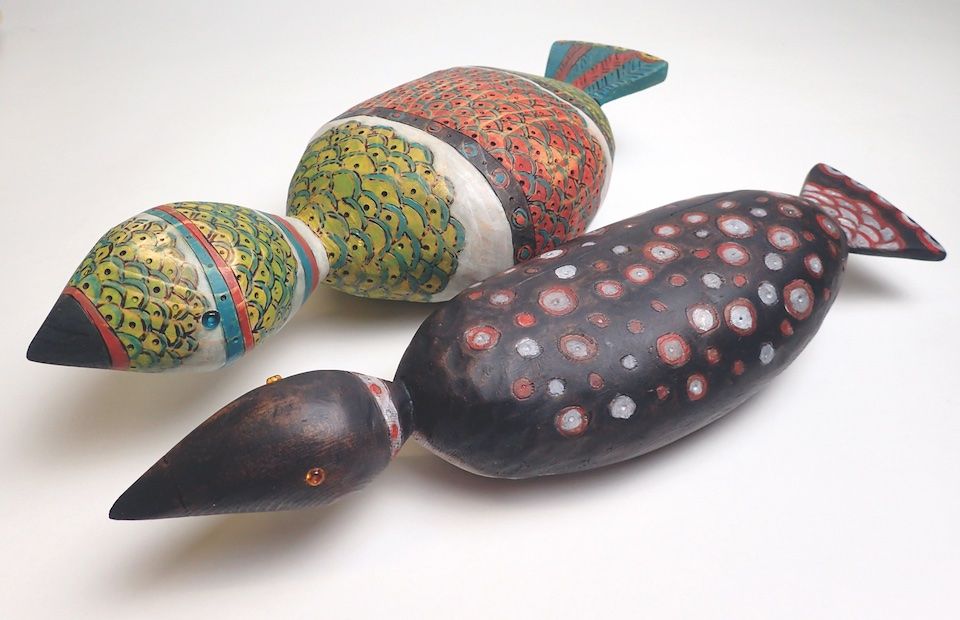
Sea Duck and Murre, by Jacqueline Madsen, 2015, cedar, paint, walnut oil, beeswax, glass beads, glue. AM792. Purchased with support from Rasmuson Foundation.
Carving was once a daily activity. Alutiiq craftsmen made throwing boards and shafts to propel their harpoons, split timbers to build houses and boats, and chiseled images into wood, bone, antler, and ivory. Through carving, people produced many of the tools essential for everyday life and designed beautiful works of art that recorded spiritual beliefs.
Raw Material

Driftwood on the beach at Cape Alitak, Kodiak Island, 2010.
Today artists search Kodiak’s beaches, forests, and lumberyards for the perfect grain, but in the old days, before spruce trees colonized Kodiak, most wood came from the beach. Carvers gathered drift logs of Pacific yew, cedar, and spruce from Kodiak’s shores, and collected alder, dwarf birch, and cottonwood from hillside thickets.
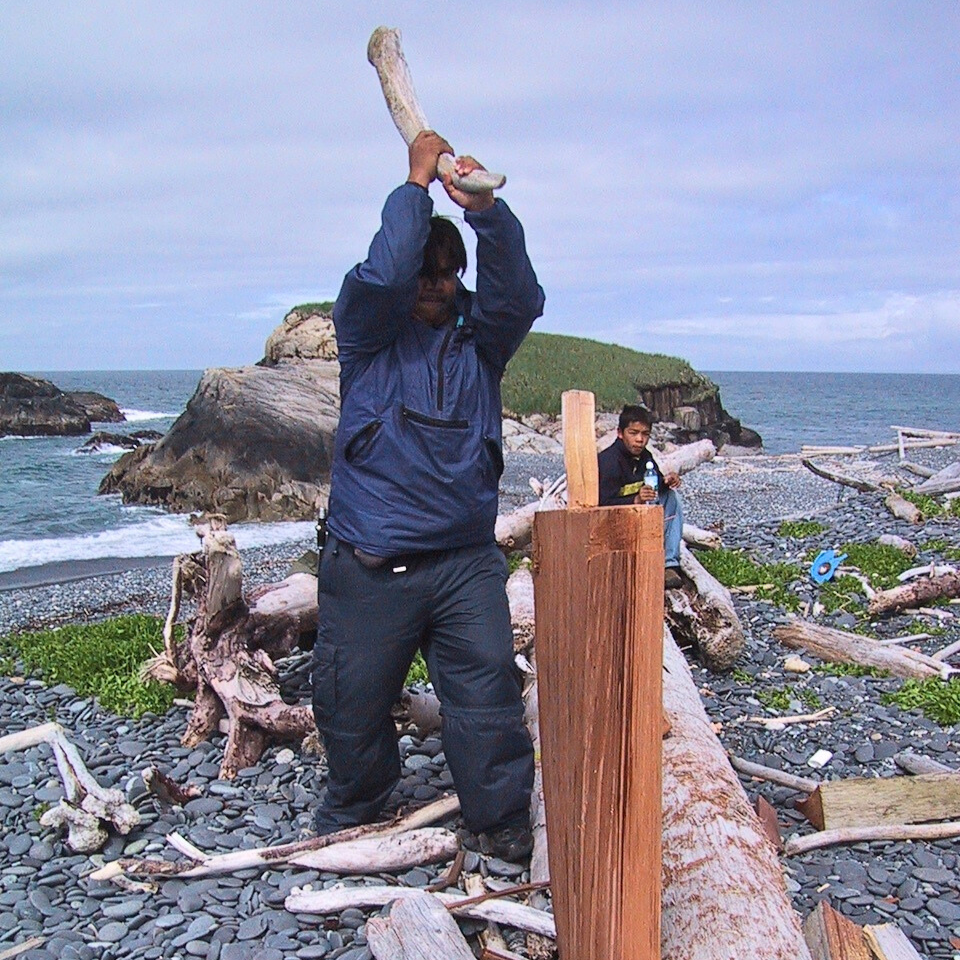
Splitting a cedar log on the beach at Cape Alitak.
Carving Tools
Artifacts reveal traditional carving techniques. Woodworkers split driftwood logs open with the help of resilient bone and wooden wedges, pounded with weighty granite mauls. They cut and shaped the resulting planks with a variety of stone adzes tied to flexible alder handles. Hand-held carving implements, wooden handles fitted with beaver, marmot, or porcupine incisors traded from the mainland, permitted finer carving. Carvers sanded the narrow gouges created by these tools with gritty abraders of pumice and sandstone and then applied finishing touches with a burnishing stone, a water-worn pebble rubbed over the carving to create a polished, splinter-free surface.
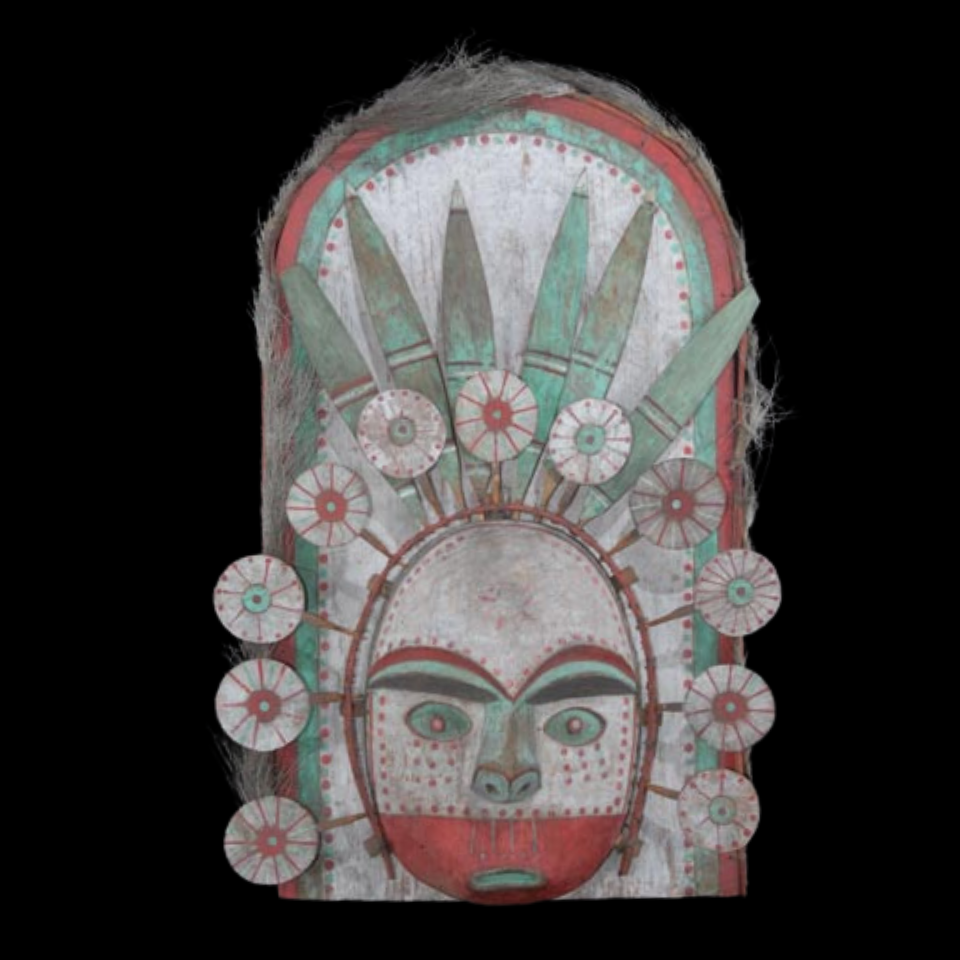
Painted mask, collected in the Kodiak region in 1872, Courtesy of the Pinart Collection, Musée Boulogne-Sur-Mer, France. Photo by Will Anderson.
Decoration
In addition to wood, carvers used feathers, fur, animal hair, baleen, grass, and pigments to enhance their works. Decoration was an essential part of carving, as finely made objects demonstrated respect for the spirit world.
Alutiiq Masks in France
Coming Home: The Return of the Alutiiq Masks
The Giinaquq—Like A Face Project

Giinaquq
The Alutiiq word for mask – giinaquq – means “like a face, but not really.” This term reflects the mystical place that carved faces held in Alutiiq culture. Carefully crafted and ornately decorated masks were both works of art and powerful religious objects. Made to share history and represent the spirit world, their use in ceremonies allowed Alutiiq people to communicate with the spirits that controlled life. To the Alutiiq people, masks are – agayuullqutaq– “something to hold sacred.”
Photo: Unartuliq mask, Pinart Collection, Musée Boulogne-sur-Mer. Photo by Will Anderson.
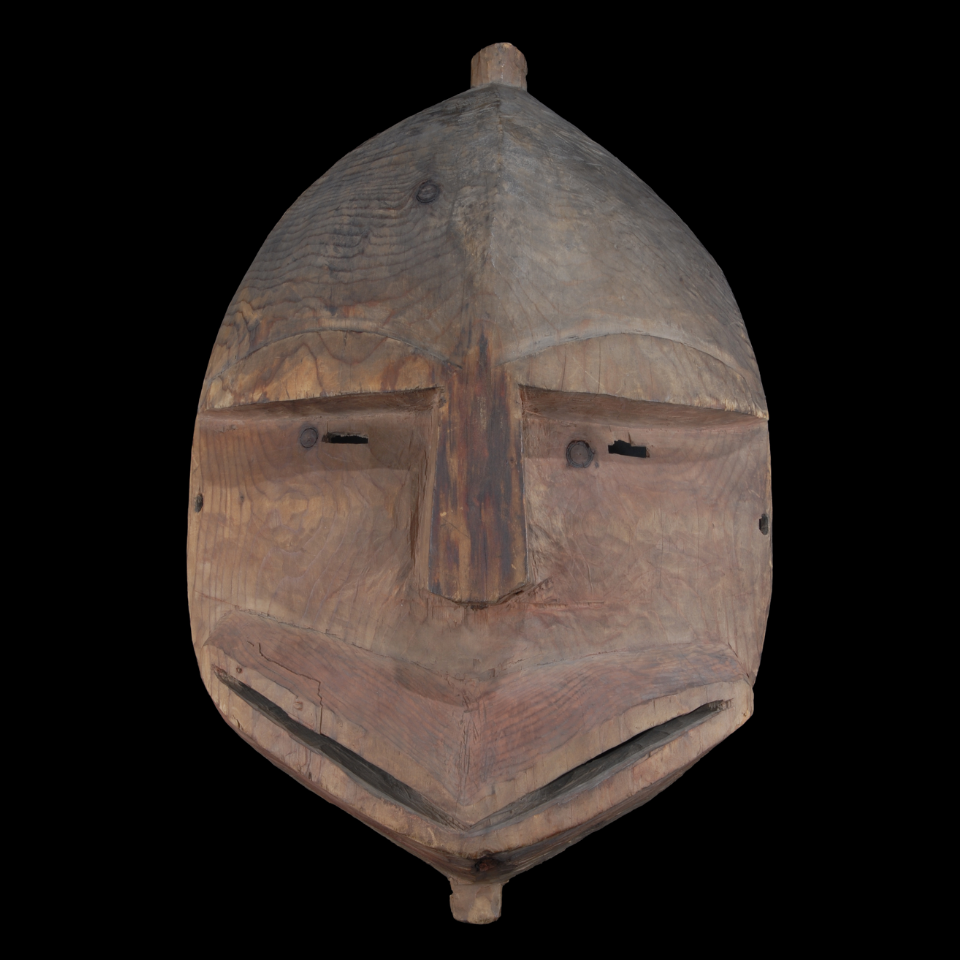
Masks
Alutiiq dancers wore masks at winter festivals to act out stories, honor the deeds of ancestors, and praise the spirit world. Giving thanks to an animal’s inner person – or sua – helped to insure a future supply of game and many masked performances were dedicated to this task. Following such ceremonies, the Alutiiq destroyed or hid their masks to protect people from their power.
Photo: Nayurta mask, Pinart Collection, Musée Boulogne-sur-Mer. Photo by Will Anderson.
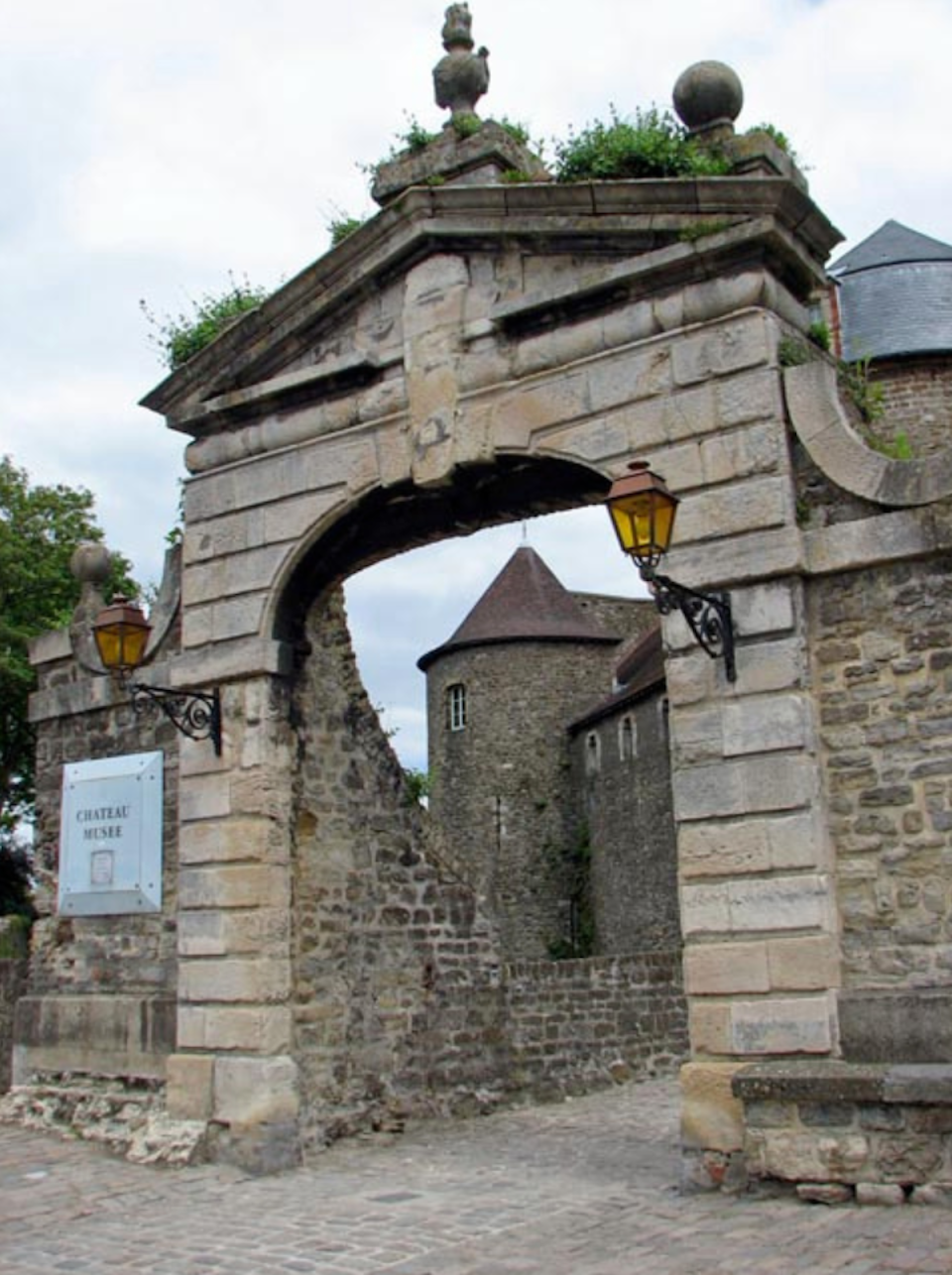
The Collector
French anthropologist Alphonse Pinart spent his life studying native peoples and languages. Financed by his family’s fortune, he sailed to Alaska in 1871. In November, Pinart kayaked from the Aleutians to Kodiak, where he spent six months visiting Alutiiq villages, recording stories, and collecting objects—including 78 ceremonial masks. Since then, the masks have been cared for by the Musée Boulogne-sur-Mer.
Photo: The entrance to the Musée Boulogne-sur-Mer.
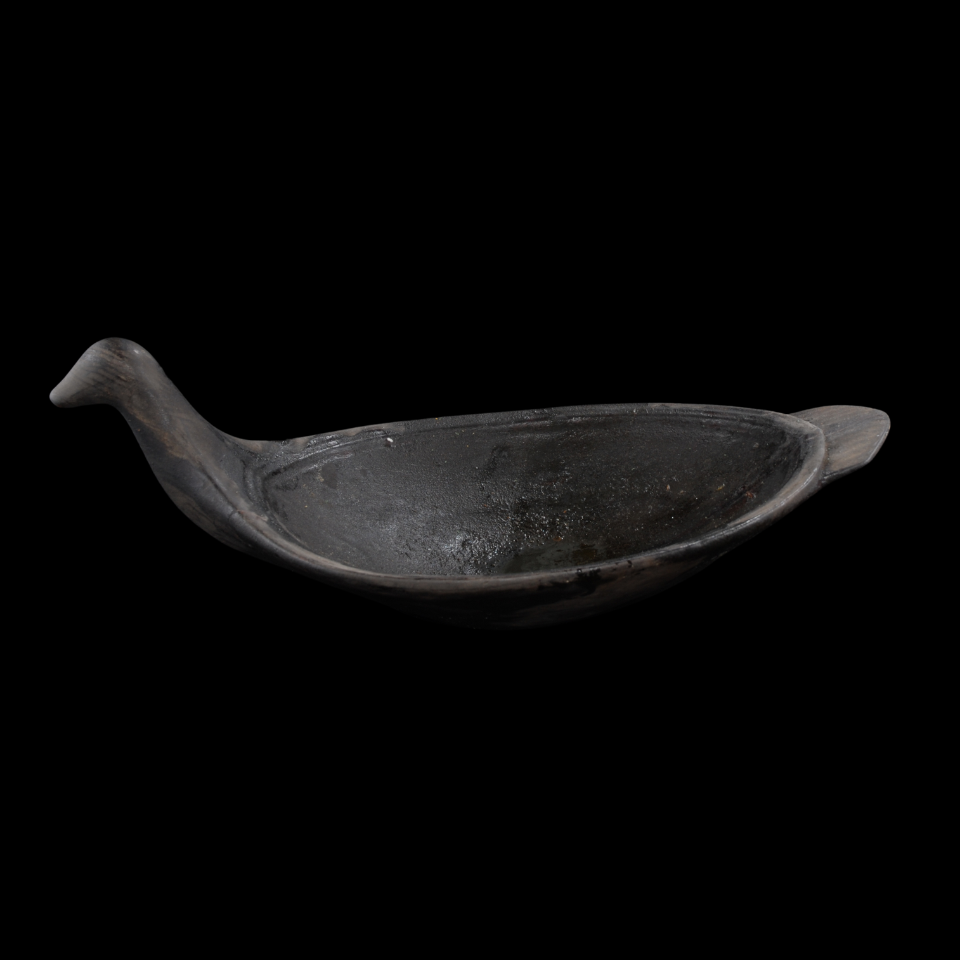
The Collection
Pinart’s collection contains the largest set of traditionally crafted Alutiiq ceremonial masks in the world. These pieces represent generations of spiritual and artistic knowledge, passed down from carver to carver and recorded in wood. Some of the masks retain their original Alutiiq names and songs.
The collection also holds bowls, spoons, drums, boat models, and beaded garments—headdresses, cuffs, and stoles.
Photo: Musée Boulogne-sur-Mer.

Exploration
In 2006, Alutiiq artists visited the collection in France. By studying carvings made 150 years ago, the artists learned directly from ancestors. They were able to understand designs, material use, manufacturing techniques, and decoration without the filter of time. Today, mask making, songwriting, and dancing are thriving with the help of cultural knowledge reawakened with Pinart’s collection and others like it.
Photo: Perry Eaton studies ancestral masks at the musée, 2006. Photo by Will Anderson.
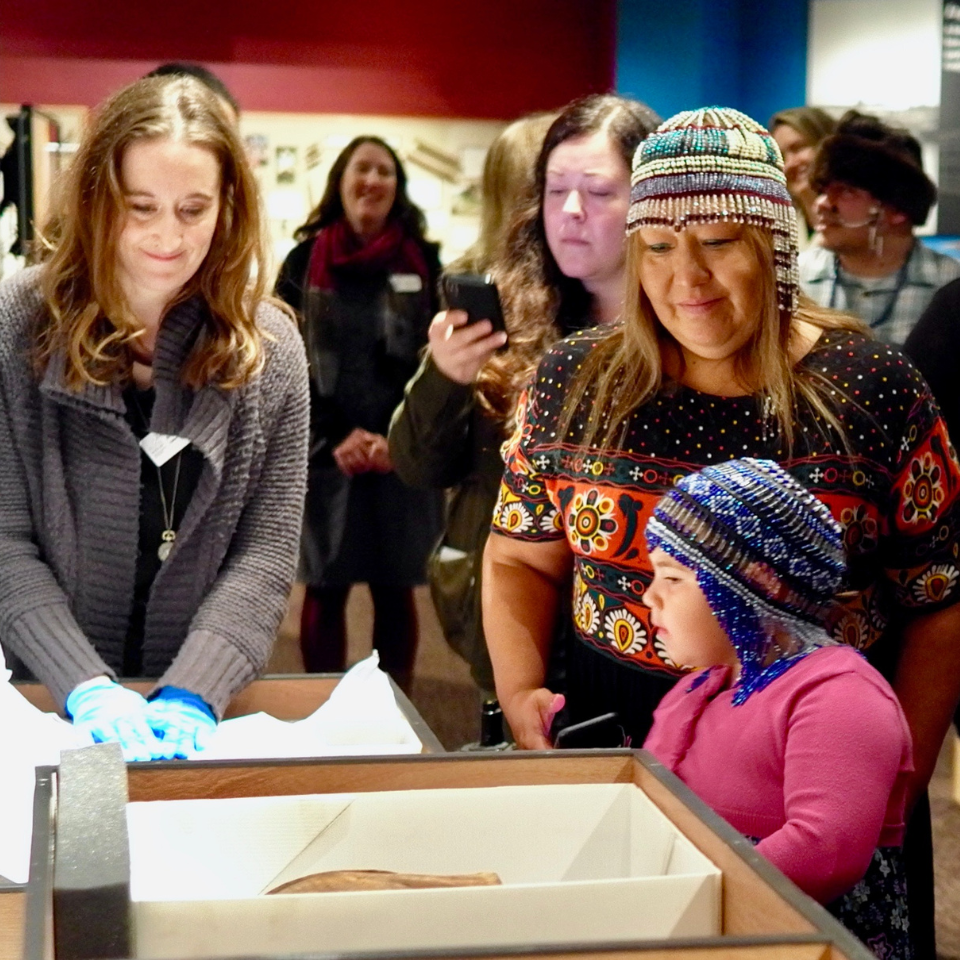
Partnership
Since artists began visiting France, the Alutiiq Museum and the Musée Boulgne-sur-Mer have continued to work together to share and study Pinart’s collection of Alutiiq objects. Exhibit, publications, workshops, and trips to France and Alaska have built a strong bond around the collection and the valuable information it holds.
Photo: Amanda Lancaster unboxes masks loaned to the Alutiiq Museum for display, study, and enjoyment by the Musée Boulogne-sur-Mer, 2018.
Learn More
Memorial Plank Masks
Personal reflections carved in wood, from a workshop led by Perry Eaton, sponsored by the Sun’aq Tribe of Kodiak.
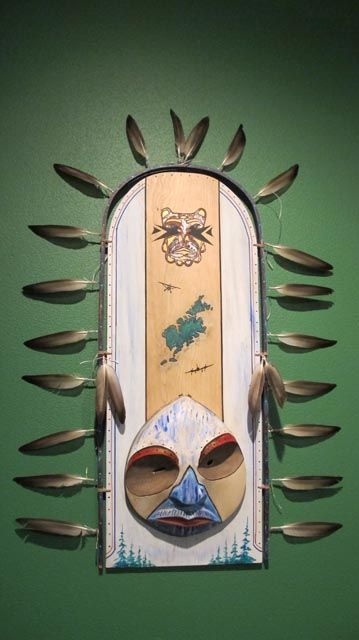
Servant Air
By Gary Knagin
White spruce, duck feathers, oil paint, and synthetic sinew
“My mask was carved as a gift in honor of Servant Air, which is an Alutiiq-owned company that reflects the Alutiiq culture and connects the people and villages of Kodiak.”

Afognak
By Nancy Nelson
White spruce, ptarmigan feathers, oil paint, and hemp twine
“To me my mask represents Afognak where I lived as a small child and today still return every year. To me it holds a strong presence of my ancestors and gives me a great sense of peace and pride of my culture. The green represents the beauty of the rich forest at Dig Afognak and the Old Village, the blue is the ocean and Litnik River. The beach glass represents one of my favorite things to do, walk the beach in the old village collecting it. The reddish brown color represents our rich land. All these colors to me represent the native people’s traditional and customary way of life.”
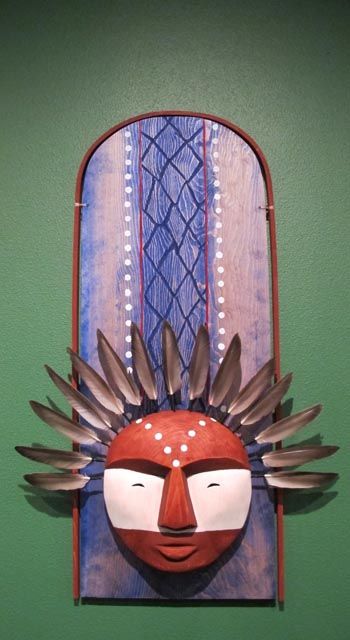
Fishermen
By Brandon Cox
White spruce, duck feathers, oil paint, and synthetic sinew
“I carved this mask to honor all fishermen – past and present.”
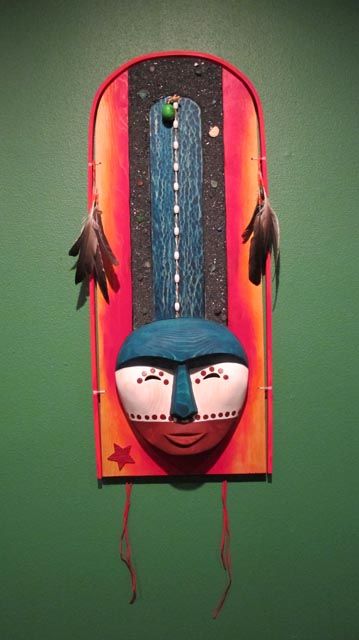
Chief of the Cove
By Patricia Abston-Cox
Materials: White spruce, duck feathers, oil paint, synthetic sinew, handmade bouy and corks, sand, and beach glass.
“I carved this mask in memory of my dad, Gary Abston, my brother, David Abston, and our family time at Chief Cove.”
Our Nets
Our Water
Our Beaches
Our Sunsets
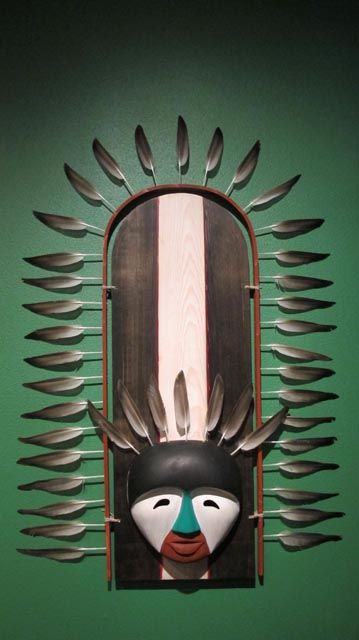
Family
by Keith J. Chichenoff
White spruce, duck feathers, oil paint, and hemp twine
“My mask is called ‘Family’ as the mask itself represents my mother, Kathryn. From our mother comes us – 7 kids represented by the 7 feathers on the mask and from us kids come 35 grandkids – represented by the 35 feathers on the outside of the hoop. The black, red, and white on the plank represent the colors of our family boat – St. Kathryn.”
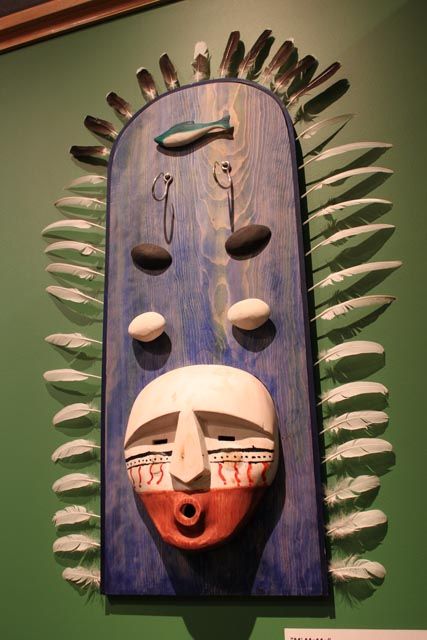
Mi Mama
By Isiah G. Simeonoff
White spruce, ptarmigan feathers, 0il paint, and fishing hooks
Mi MaMa
for Barbara Donna Panamaroff-Phillips
October 30, 1956 – May 10, 2012
MiMaMa loved being in a boat to be next to the water.
MiMaMa loved fishing and putting fish up for Winter.
MiMaMa loved her children and her Grand Children.
I make this Mask to show Love and Honor for my Mi MaMa.
We Love you and we will never forget you.
by Isiah G. Simeonoff, Grandson, Age 13
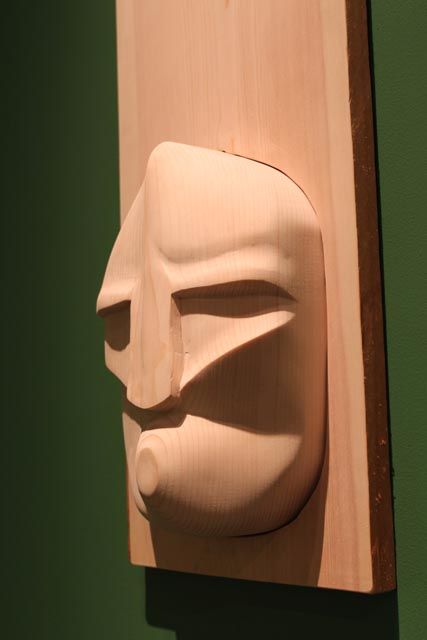
Marriage Mask
By Jonathan & Hanna Sholl
Spruce and nails
“This contemporary plank mask titled Marriage Mask was created jointly to commemorate a new marriage. This mask is unfinished, when completed it will have the elements of paint and feathers to accent it.”
